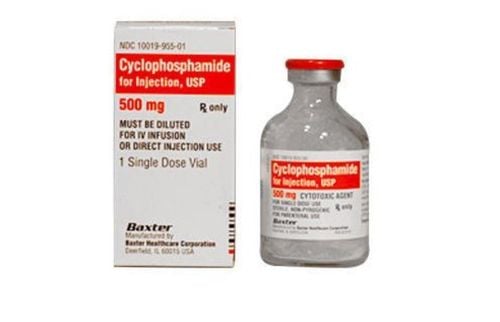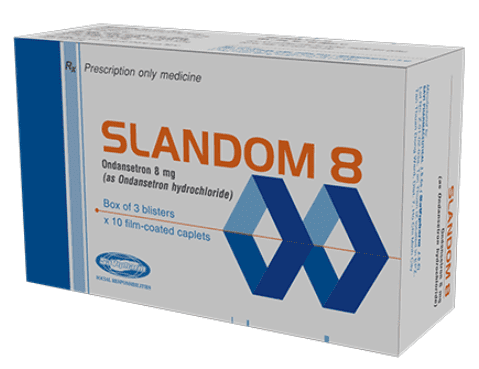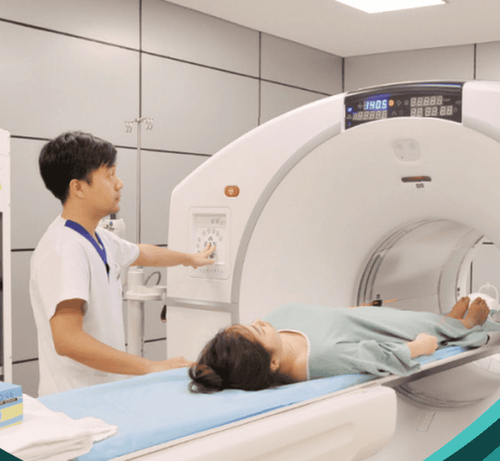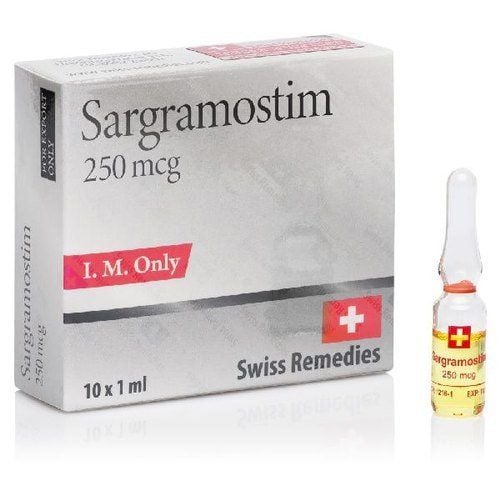This is an automatically translated article.
Article by Master, Doctor Mai Vien Phuong - Gastrointestinal endoscopist - Department of Medical Examination & Internal Medicine - Vinmec Central Park International General Hospital.
The application of PET tomography has shown that the response to pancreatic ductal carcinoma after adjuvant neoplastic therapy has changed from morphological assessment to metabolic assessment, especially with the proposed PET/ MRI, plays an important role in predicting treatment outcomes and clinical decision-making in these patients. However, due to lack of literature, the results need to be studied further.
1. Positron emission tomography image in pancreatic ductal carcinoma
18 F-fluorodeoxyglucose positron emission tomography (18-F-FDG-PET) is a diagnostic test that reflects the genetic, molecular, metabolic, and functional status of a lesion. The maximum standardized uptake value (SUVmax) obtained by PET imaging reflects the glucose metabolism of the tumours.
Choi et al explored the relationship between early treatment response after neoadjuvant chemotherapy with FDG-PET and surgical outcomes in locally advanced pancreatic ductal carcinoma. The results show that FDG-PET is useful for monitoring the clinical efficacy of neoplastic adjuvant treatment in locally advanced ductal adenocarcinoma. In patients with a good tumor response (50% reduction in SUV volume after cycle 1), surgical resection was performed. Lee et al investigated the role of preoperative PET/CT 18-F-FDG in predicting survival of pancreatic carcinoma patients. The results showed that the tumor metabolizing volume and the total lesion fraction were independent prognostic factors to predict the recurrence-free survival as well as the patient's OS and PET/CT provided. useful prognostic information for patients after curative resection of pancreatic ductal carcinoma, regardless of neoplastic adjuvant therapy.
Recently, a number of studies have further investigated the value of SUVmax in pancreatic ductal carcinoma to evaluate the tumor response after neoplastic adjuvant therapy. The results show that SUV max after adjuvant neoplasia can be an effective indicator to predict prognosis and treatment response to neoplastic adjuvant therapy for pancreatic carcinoma. Furthermore, post-treatment metabolic parameters of PET/MRI were also reported to correlate with pathological response. However, the sample sizes of these studies were relatively small (<50 cases in 2/3 articles) and the results were inconclusive. Barnes et al enrolled 201 consecutive patients with localized ductal carcinoma treated with neoadjuvant therapy. The results show that the pre-treatment SUVmax cut-off value of 7.5 on PET/CT can accurately predict OS. Results from Yokose et al showed that the PET response criterion in solid tumors was more accurate in determining the impact of neoplastic adjuvant therapy for pancreatic ductal carcinoma than the RECIST criterion (72, 7% vs 36.4%), which opens a new direction for future research in this area. The application of PET tomography showed that the response of pancreatic ductal adenocarcinoma after adjuvant neoplastic therapy changed from morphological assessment to metabolic assessment, especially with PET/MRI recommendation. , plays an important role in predicting treatment outcomes and clinical decision-making in these patients. However, due to lack of literature, the results need to be studied further. In addition, the PET response criteria in solid tumor criteria should be compared with traditional evaluation criteria in prospective studies.

Based on the above theoretical assumptions, Hamdy et al investigated the value of perfusion CT in predicting the response of pancreatic ductal carcinoma to adjuvant chemotherapy and radiotherapy. Results showed that participants responding to adjuvant neoplasia had higher baseline blood flow than nonresponders (mean, 44 mL/100 g/min versus 28 mL/100 g/min, respectively). g/min). In responders, perfusion parameters increased after treatment, whereas there were no significant changes in perfusion parameters in nonresponders. The authors suggest that pre-treatment CT perfusion may be useful to predict the histopathological response of pancreatic ductal carcinoma to adjuvant neoplasia. However, the precise role of perfusion imaging in pancreatic ductal carcinoma needs further evaluation in a large number of patients.
Please dial HOTLINE for more information or register for an appointment HERE. Download MyVinmec app to make appointments faster and to manage your bookings easily.
References: Zhang Y, Huang ZX, Song B. Role of imaging in evaluating the response after neoadjuvant treatment for pancreatic ductal adenocarcinoma. World J Gastroenterol 2021; 27(22): 3037-3049 [DOI: 10.3748/wjg.v27.i22.3037]













